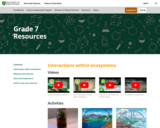These activities for ages 11-16 explore the human impact of the climate emergency and provide new spaces, approaches and opportunities for climate education and social action.
This resource frames the climate emergency as a human rights and people-centered issue and supports teachers to promote a sense of agency and empowerment within young people.
This in turn is recognized as one strategy to help young people manage eco-anxiety, as well as disillusionment and disengagement with climate issues.
The resource includes five activities:
Activity 1 - Climate change, human rights and equality - An activity to introduce the links between climate change and human rights
Activity 2 - Climate justice - A mystery activity to demonstrate the inequalities inherent in the global interconnectedness of climate change. All people are affected in some way by the climate emergency but who you are and where you are in the world matters
Activity 3 – Critically thinking about evidence -An activity to examine case study films and make conclusions about which human rights are most threatened by climate change, which groups in society are most affected and what the solutions are.
Activity 4 – A climate consequences wheel - A consequences wheel activity using evidence from one case study film to make inferences about the different impacts of climate change on members of a community with different personal characteristics (for example: male or female).
Activity 5 – The climate game - A role play activity for which a clear space, either indoors or outdoors, is required. Learners compare the impacts of climate change on people from different backgrounds and in different circumstances. For some participants, the impacts of climate change overlap and are amplified. This strengthens learners’ understanding of intersectionality (interconnectedness).






